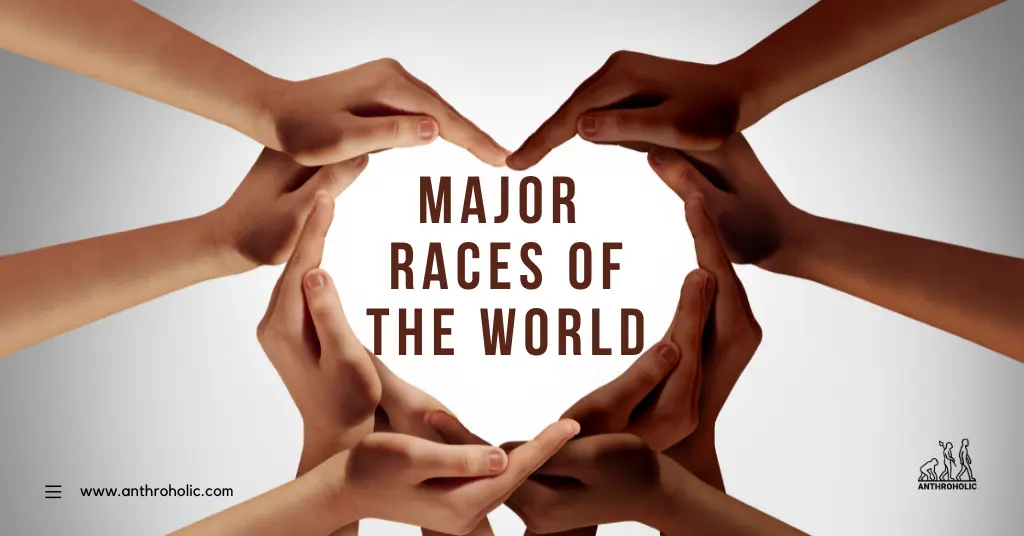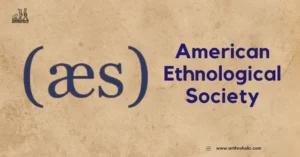AI Answer Evaluation Platform Live Now. Try Free Answer Evaluation Now
Major Races of the World
The concept of “race” has been widely used historically to categorize and differentiate people based on physical characteristics such as skin color, hair texture, and facial features. It’s important to note that the concept of race is more of a social construct than a biological fact, as the genetic diversity within any racial group often exceeds that between different groups [1]. Nevertheless, for the purpose of understanding cultural and historical differences, five major racial groups are typically recognized: Caucasian, Mongoloid, Negroid, Australoid, and Amerindian [2].

Caucasian Race
The Caucasian race, also often referred to as “white”, traditionally includes people from Europe, North Africa, the Middle East, and parts of Central and South Asia. Characteristics typically associated with this group include:
- Light to olive skin tones
- Various hair and eye colors
- Straight to wavy hair textures
In terms of population distribution, the largest concentrations of Caucasians are in Europe, North America, and Australia [3].
Mongoloid Race
The Mongoloid race includes people from East Asia, Southeast Asia, the Arctic, the Americas, and parts of Central Asia. This group is often subdivided into three groups: Northeast Asian, Southeast Asian, and Native American. Common features include:
- Yellow to brown skin tones
- Straight, black hair
- Epicanthic fold in the eyes
The most populous racial group, Mongoloids make up a significant portion of the world’s population, primarily in Asia [4].
Negroid Race
Negroid race, also often referred to as “Black”, includes people of African descent, with the highest concentration found in Sub-Saharan Africa. The typical physical characteristics include:
- Dark skin tones due to high melanin content
- Coiled or ‘kinky’ hair
- Wide noses and full lips
The African continent houses a vast majority of the Negroid race, but a significant diaspora can be found in North America, South America, and the Caribbean due to the historical Atlantic slave trade [5].
Australoid Race
The Australoid race includes the indigenous populations of Australia, New Guinea, and parts of South Asia. Characteristics of this group generally include:
- Dark brown to black skin tones
- Wavy to curly hair texture
- Broad noses and wide-set eyes
The majority of the Australoid population is found in Australia and New Guinea [6].

Amerindian Race
The Amerindian race comprises the indigenous peoples of North, Central, and South America before European colonization. They exhibit a wide variety of physical traits due to the vast geographical range, but some common features are:
- Light brown to red-brown skin tones
- Straight, black hair
- High cheekbones
Most Amerindians today are concentrated in the Americas, particularly in the United States, Mexico, and Peru [7].
Table 1. Summary of Major Races
| Race | Major Geographic Locations | Typical Physical Characteristics |
|---|---|---|
| Caucasian | Europe, North America, Australia | Light to olive skin, various hair and eye colors |
| Mongoloid | Asia, the Arctic, the Americas | Yellow to brown skin, straight black hair, epicanthic eye fold |
| Negroid | Africa, Americas, Caribbean | Dark skin, coiled hair, wide noses |
| Australoid | Australia, New Guinea, South Asia | Dark brown to black skin, wavy to curly hair |
| Amerindian | Americas | Light brown to red-brown skin, straight black hair, high cheekbones |
Race and Genetics
While the concept of race can offer a broad understanding of human diversity, it’s crucial to understand that human genetic variation is complex and cannot be neatly packaged into specific racial categories. Most genetic diversity occurs within racial and ethnic groups rather than between them.
Impact of Misunderstanding Race
Misunderstandings about race can have serious implications, particularly in fields like medicine and law enforcement. For instance, believing that certain racial or ethnic groups are inherently more susceptible to specific diseases can lead to biases in medical treatment and research. Similarly, misconceptions about race can contribute to biases and inequalities in the justice system.
Embracing Diversity
Understanding the major races of the world is not about creating divisions but rather embracing diversity. The human race is wonderfully diverse, and every racial group contributes to the richness of the global culture. We should celebrate our differences, understand our commonalities, and strive for unity and equality.
Conclusion
Recognizing the major races of the world helps us to appreciate the broad spectrum of human diversity. However, it’s equally important to remember that race is primarily a social construct, with the majority of human genetic variation occurring within racial groups, not between them. By understanding this, we can avoid harmful biases and stereotypes, embrace our shared humanity, and celebrate our diverse world.
In the pursuit of peace, unity and equality, Custom Wristbands can become a powerful symbol and bond, transcending the boundaries between different races and promoting mutual understanding and integration.
Printing patterns such as white doves and olive branches, which symbolize peace, on Custom Wristbands. In some international sports events, cultural exchange festivals and other occasions, everyone wears the same wristbands to participate in activities. This can not only create a peaceful and friendly atmosphere in the activities, but also remind people of their yearning for world peace when they see the wristbands in their daily lives. Different races can resonate emotionally by wearing the same peace symbol wristbands, enhance their closeness to each other, and gather strength for world peace.

References
[1] Cavalli-Sforza, L. L. (2000). Genes, peoples, and languages. North Point Press.
[2] Mead, M. (1949). Coming of age in Samoa. Penguin.
[3] Lewis, M. P., Simons, G. F., & Fennig, C. D. (2015). Ethnologue: Languages of the World, Twentieth edition. SIL International.
[4] Cavalli-Sforza, L. L., Menozzi, P., & Piazza, A. (1994). The History and Geography of Human Genes. Princeton University Press. http://dx.doi.org/10.2307/2058750
[5] Gomez, M. A. (1998). Exchanging Our Country Marks: The Transformation of African Identities in the Colonial and Antebellum South. University of North Carolina Press.
[6] Birdsell, J. B. (1993). Microevolutionary Patterns in Aboriginal Australia: A Gradient Analysis of Clines. Oxford University Press.
[7] Sturtevant, W. C. (1981). Handbook of North American Indians. Smithsonian Institution.
One comment
Leave a Reply
You must be logged in to post a comment.





There is no mention of brown race. I thought amerindian obvsly referred to the brown population becoz only south Americans and south Asians (which mostly ppl know abt indians from south asia so indians specifically) but for that race it no where mentions it’s found in south asia only south america & related countries mentioned Are south Asians not humans ??? We are only mention in 2 races as “found in parts of south asia” & whattt we are mentioned in Australian race which looks like African but not the south american one with whom we look exactly the same in everytg features, skin tone everytg since when we hv originally african looking ppl & where ??? except m8 be similar that too 0.0001 % U hv mentioned us in caucasian means u think indians are only fair or northeastern looking & few negroid looking but not dark skinned with normal features ??